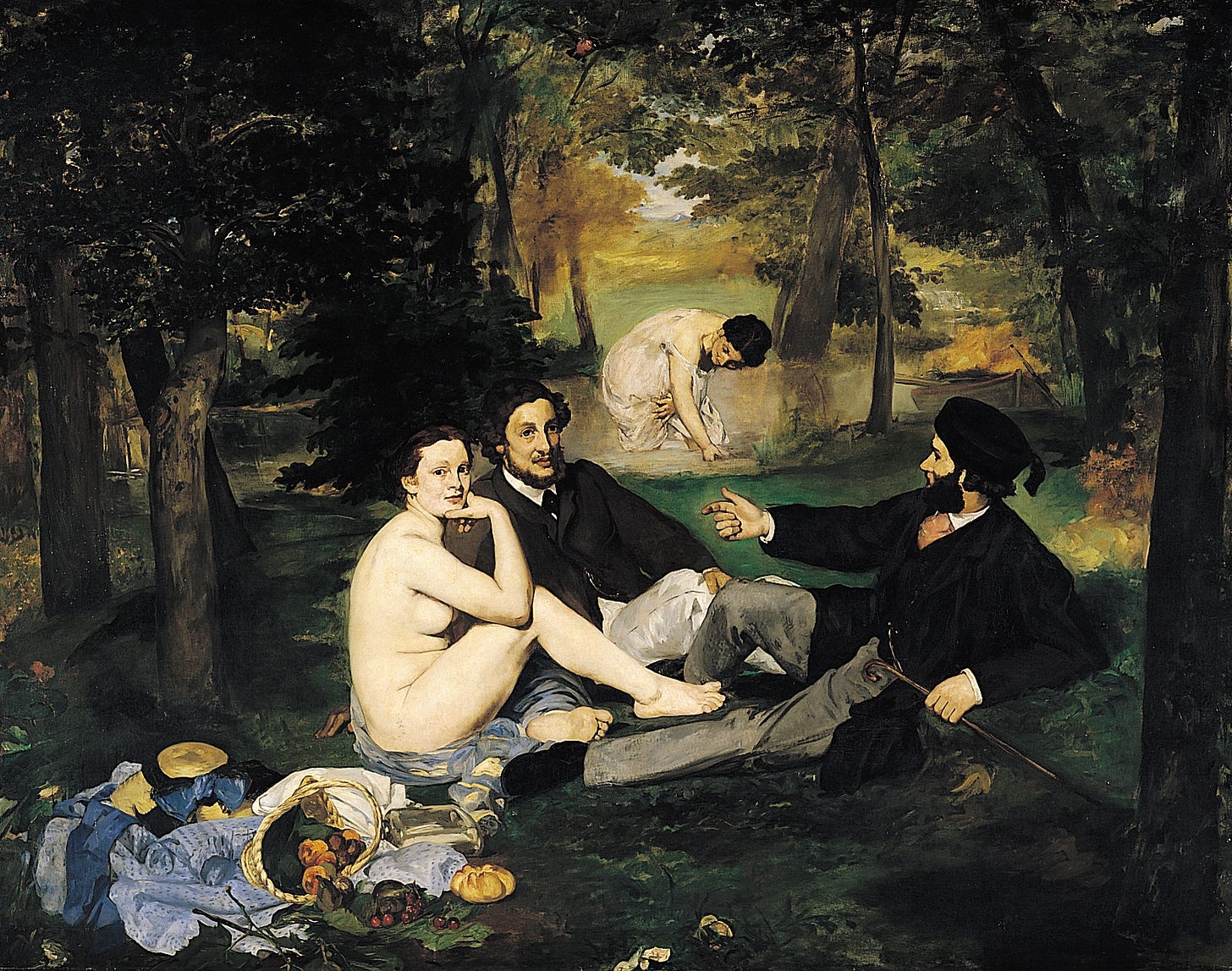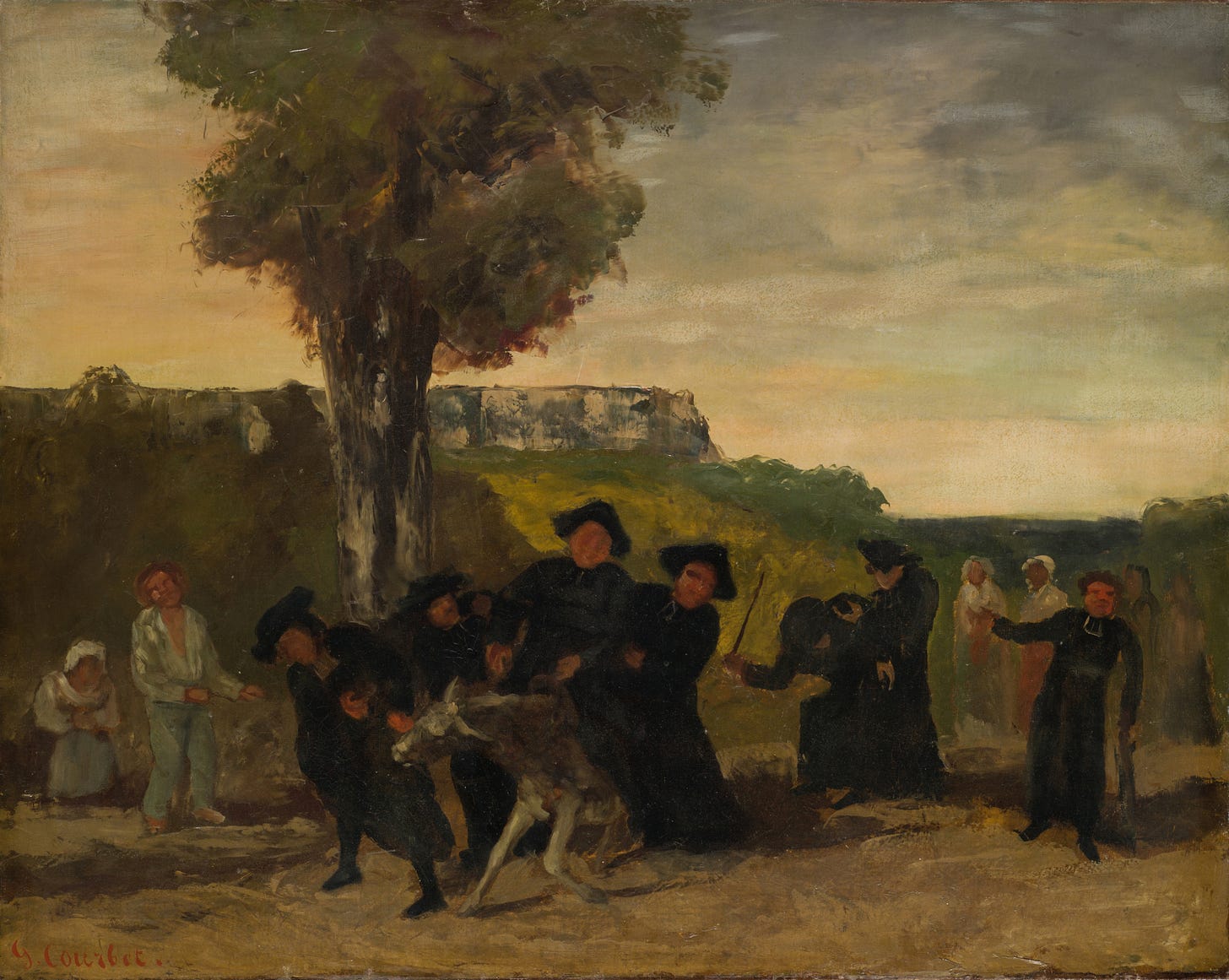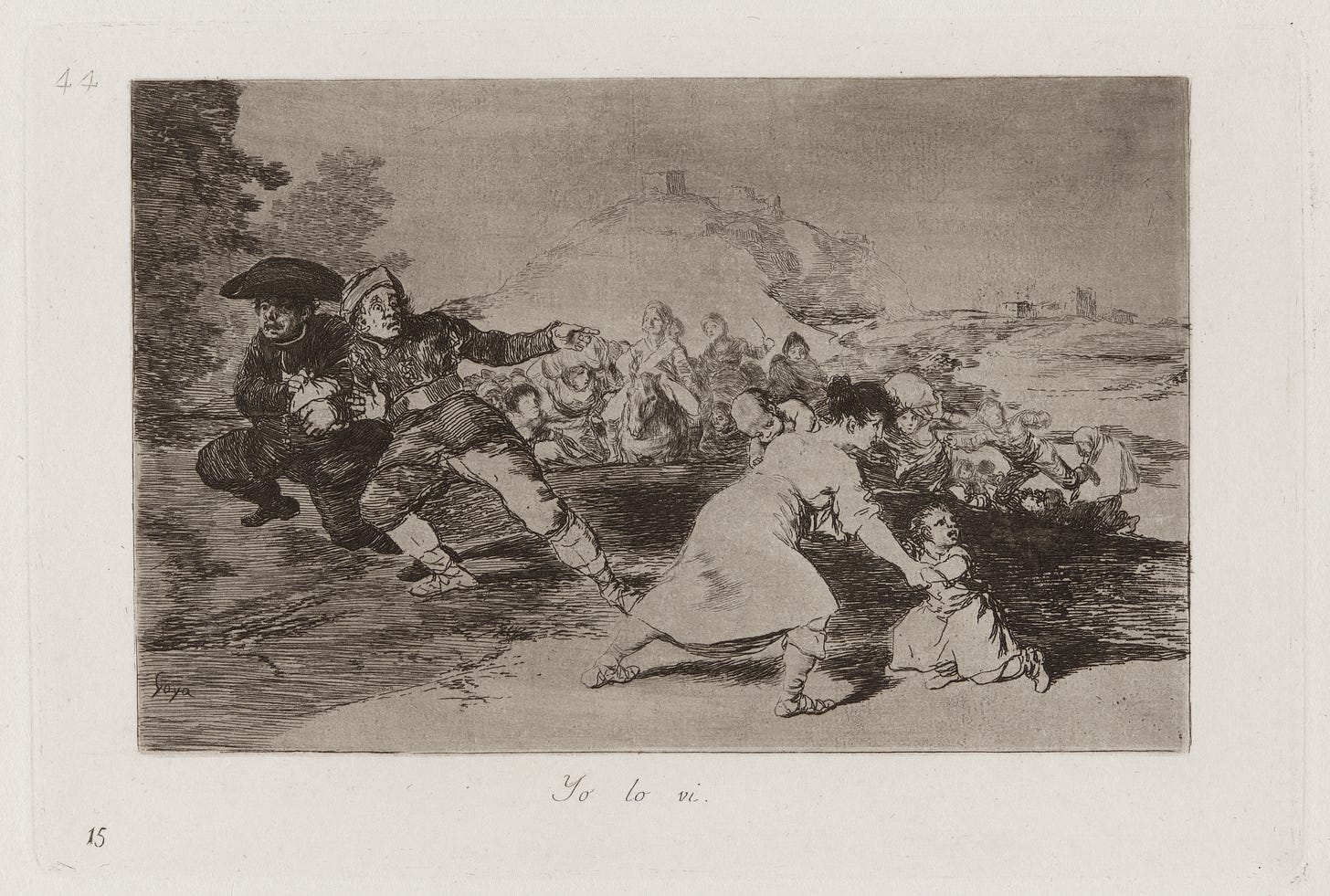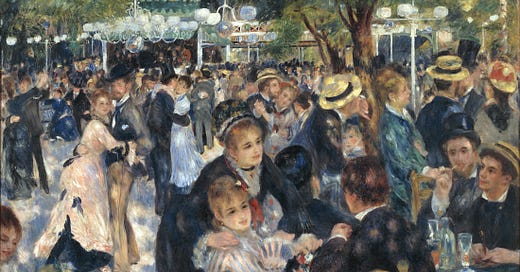First Impressionists May Be Correct.
They were contending with a technology revolution, and they used media to win.
Last month I visited to the Musée d'Orsay in Paris. It’s Ground Zero for Impressionism, the world’s most popular art form,1 in a town that takes its art very seriously. I didn’t get exactly what I expected, though. Instead of simply gawping at the greats, I got a look at the interaction of technology, markets, society, and the depiction of human experience. Good time and money value there.
On a Thursday in mid October the top floor of the place, home to the permanent collection of Impressionist greats, was packed. Everyone’s got their favorites among the Renoirs and the Monets and the Sisleys and the Cezannes and the Gaugins.2 You never saw so many different nationalities taking selfies against so many different paintings.
Part of the appeal of these paintings is their backstory, which I was taught as a child in school, and you probably were too, and which the guides repeat in multiple languages: These paintings were wildly shocking in their day, outraging people. The artists were like subversive outlaws, rejecting convention to paint in a new, freer, style.
I just doesn’t feel that way anymore. I realized that it’s impossible to look at these paintings and feel anything the slightest bit revolutionary about them. These are the paintings we were raised on. They are central to our ideas of Beauty and Art. We see them on coffee mugs and gift wrap, and on the walls of a thousand dorm rooms. A far more revolutionary act now would be to achieve the frame of mind in which these paintings weren’t merely pretty, but shocking, ugly, and outrageous, an affront to the bourgeois values of the Academy, and your sense of the proper order of things.3
It’s not just that we’ve seen them all our lives, either. Or that we were taught that they were the wellspring of all the great art since. Which, who knows, maybe they are. It’s that the “wild man, rebel, creature of impulse and the outlaw truth of the unconscious” is by now too familiar a trope to mean anything. I tired of that game when tour buses trolled the punk streets on New York’s Lower East side, and gave up on it when the 1994 Gap ad for pants proclaimed “Jack Kerouac wore khakis.” Let’s not even start on Steve Jobs using Mahatma Gandhi and Rosa Parks to sell Personal Computers.
As I dug into it, I learned that the Impressionists were in on the outsider gimmick themselves, pretty much from the jump. The May 15, 1863, Salon des Refusés, or “salon of the rejected,” was organized to protest the exclusion of certain painters from the official Salon.4 This was far from the rebel move it seemed to be; the Emperor attended the show of the rejected on May 15, and within a couple of months the official teaching and showing of art (remember, this is France, where they do like a system) changed. The salon would be held annually, the jury was restructured, and later that year the teaching of art was also restructured.

It’s not just that the rebellion came slightly co-opted. It was gamed. Gustave Courbet, who’d done well at the very stuffy Salon of 1859, also tried to place a painting in the Salon des Refusés. It was rejected because of its subject matter, a group of drunken Catholic priests. He showed the painting in his studio for several weeks, later writing, “I made the painting so it would be rejected and therefore bring me money.”
“Too racy for the Refusés!” The promo copy writes itself on that one. Media savvy had clearly become part of the art process.

Behind this entertaining story, something quite serious and market-oriented was going on. The artists and their market were reacting to advances in technology that threatened the previous lock that painting possessed on channeling experience.
It’s illuminating (pun intended) to hold the rise of Impressionism up to the parallel development of photography, and consider how photography disrupted painting, just as we now consider the way digital technology is disrupting the market for traditional media.
The first photographs were made in 1839, and were more widely introduced as daguerreotypes in 1840. Perhaps the development registered dimly on painters, the way newspapers and TV looked at the early Internet. In 1851 Queen Victoria showed interest in stereoscopic pictures, a primitive version of three-dimensional images, at the Crystal Palace Exhibition. That same year, the wet collodion development process came out, which made the process of making photographs 20 times faster. Around 1851, wet glass plates enabled better definition. In the 1860s tintypes make photos much cheaper.
Faster, better, cheaper - sound familiar? Suddenly photography is out there in the world, not confined to stodgy and slow-moving studios. Photography sped the great migrations of the Nineteenth Century, since people could leave or send something of themselves in the old country. Not long before, you had to afford a painter for that.
Roger Fenton photographed the 1853-1856 Crimean War in a sanitized style that suited his rich patrons. Matthew Brady, who ran ads for soldiers to get their portraits done before it was too late, oversaw the creation of over 10,000 images of the Civil War. These included the dead strewn across battlefields and generals slouching in their tents, exhausted. Brady went bankrupt from the project and died a pauper, but he revolutionized the way the world saw war, death, and heroism, with an authority even Goya’s chilling prints of war, published the same year as the Salon des Refusés, couldn’t match.


Photography was clearly in competition with painting in the art market. While paintings of the physical world could not achieve the graphic realism of photography, the Impressionists, who claimed to be painting the world as it truly is, portrayed not simply what was seen, but the emotional inner experience of seeing.
With technology’s effect on Impressionist art in mind, it’s fitting that an 1874 exhibition of another 200 “refused” works5, where the term “Impressionist” was first coined by a satirical reviewer, was held in the gallery of Nadar, a famous photographer and balloonist, who was friends with many of the artists.
The salon purposely had no juries or prizes, but it gained lots of newspaper coverage ahead of time. The painters may have been refused, but they understood media power. Though the show was something of a failure in its relative foot traffic compared with the official salon, they championed “Impressionist” like a modern brand. They kept grinding away in their outlaw image enjoying growing levels of nonofficial approval, until even the French state had to take notice.
And today, Impressionism has become mainstream. It taught us how to look at the world. The painters marketed themselves as outlaws and bohemians, and in a sense they were, though the source of their revolution was technological: the development of photography. But the idea of the artist as visionary rebel is with us still, since (safely) outrageous things sell.
Looking at you, bitcoin guy who paid $6.2 million to eat a banana.
Push back all you want, with Pop Art (which is popular), scroll painting (which has endured longer than probably any other), or film (a complicated discussion.) No other type of painting has ended up on so many products, in so many sensibilities, or been the center of so many hit shows and guided tours. It is an art movement we all inhabit.
In case you’re a stickler: Yes, some of them are called “post-Impressionists,” and were in their day by several critics. Even then, people got stuck for what to call things in themselves, without reference to the preceding thing, which to us seems rather…postmodern. But the Musée puts them together, so we can too.
A story by the Argentinian writer Jorge Luis Borges, “Pierre Menard, Author of the Quixote,” works off a similar premise. A modern writer attempts to re-create Don Quixote by willing himself into the mindset of someone in 1600, and forgetting or accommodating all the learning that has come since. It’s a satire.
They had submitted paintings, and these works were rejected. By those terms, you could argue that you were refused the Nobel Prize this year. On the other hand, the conventional Salon had accepted 3,894 artworks, most of which nobody remembers, so it was just as well not to be in that group.
It might seem odd that this “refusal” thing was still going on, since after the 1863 “refused” show several of the painters had one-man shows, Emile Zola wrote about them, and the style of quick brush strokes and unstaged, non-metaphoric subjects was well-established. They were painting the world as they saw it, supposedly, and doing okay. The political circumstances changed, though, once Paris was surrounded by German armies in the disastrous Franco-Prussian war, the city was taken over by the Paris Commune, and the state quashed that two-month adventure by killing about 15,000 people in the streets. Artists were divided on this: Courbet was a big fan of the Commune, while Flaubert thought it was the last gasp of a Medieval city-state. At any rate, after that the social climate became quite conservative.
[All parallels to America’s disastrous failures in Iraq and Afghanistan, the 2008 financial collapse, riots in cities, and the counter reaction of arch-conservative values, are your own. We avoid current events here, except in the sense that all interesting events are in some way current.]





Useful contextualization around the utilitarian nature of shifting engagement in the medium of painting as a response to technological change.
I'm liking the footnoted format of these posts as well!